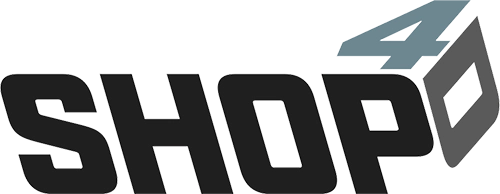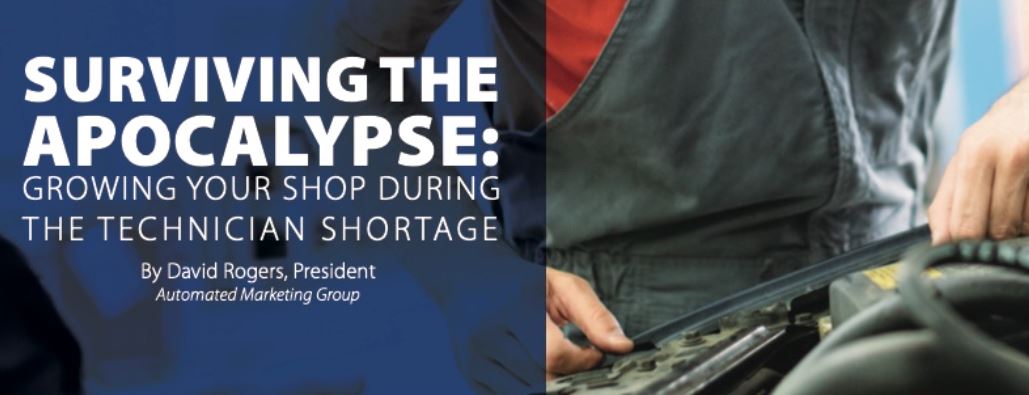by David Rogers
As published in AutoLink Magazine
There is no more dire problem that we face in the automotive industry than the technician shortage.
That’s a big way to open, especially given the current landscape. Inflation is eating profits, supply chain issues are slowing production, and municipal lock downs continue to threaten our ability to serve our customers.
These things will pass. The technician shortage, however, will not.
This isn’t an article on the causes of the technician shortage. There’s no reason to spend paragraphs talking about what the very same techs leaving the industry are shouting from the rooftops: they aren’t earning what they’re worth, they’re disrespected, and they’re sick of unprofessional conditions, cultures, and management. Unless the industry makes sweeping changes, techs will continue to leave the industry, and the shortage will continue to worsen.
In other words, this article is directed not at the industry, but at you, the owner who wants to survive this tech shortage. Because make no mistake, this is absolutely becoming a matter of survival. When there are not enough technicians in an area, the only shops that can grow are the ones that can hire and retain quality technicians. Multi-shop operations will feel the shortage even more acutely because the pain will be coming from all locations.
Which is why the shops that survive and grow these next few years will be the ones that best utilize the management triangle.
Imagine a triangle with three equal sides. In construction and engineering, there’s a reason why this kind of triangle is the most common shape: it distributes stress equally and can stand up to immense force.
In our triangle, one side is labeled “employee,” another is labeled “customer,” and the third is labeled “business”.
This triangle represents how every decision we make has to keep all three of these critical components of our business in alignment. In construction, a triangle with unequal sides is more likely to crumble and collapse under stress, and it’s the same way with our management triangle.
Meaning if we want to grow one side of the triangle, we need to grow all three sides equally. Shrinking one side to make another side bigger makes the whole structure unsound.
This management triangle being out of alignment has been a major cause of the technician shortage. Consider how it applies to selling diagnostics in a shop. If the service advisor doesn’t know how to sell diagnostics (or doesn’t want to), that means the customer side of the management triangle is growing by taking away from one of the other sides of the triangle.
If the shop owner asks the technician to do the diagnostics for free (probably with a promise to “make it up later”), then the “employee” side suffers. If the owner pays the tech for the work without charging the customer, then it’s the “shop” side that suffers.
Neither should be acceptable. The management triangle says that the only way for all sides to win is for the customer to be clearly educated about the benefit and value of diagnostic time so that they make the right decision to approve the work, allowing the shop to charge their diagnostics labor rate and pay the technician fairly for their time and expertise. That might mean educating the service advisor on how to better sell diagnostics, or changing the shop policy on how diagnostics are sold.
The one thing it shouldn’t mean, however, is that the technician is asked to give away their hard-won education or use their expensive tools for free on the promise of future earnings.
Of course, the application of the management triangle is much broader than diagnostics sales. It needs to permeate every decision we make as shop owners if we’re going to create a culture where customers, technicians, and the business are all happy and healthy.
Which is why a critical part of these next few years needs to be focused on how we incentivize our teams.
The reality is that technicians deserve to make six figures. Their education, experience, investments in tools, and professionalism would command such compensation in other industries, a fact that has directly contributed to the tech shortage.
But increasing payroll by itself will mean that the management triangle is out of alignment. Either the
shop loses critical gross profit, or — if the shop increases labor rates — then the customer will see higher costs for no increase in value. In either case, the triangle begins
to crumble.
This is why incentives become so critical.
A well-designed incentivized pay plan ensures that the employee is in control of their paycheck and able to earn their worth by focusing on the very same actions that make the shop more profitable and deliver more value to the customer.
It should come as no surprise that not all pay plans are created equal, of course.
Off-the-shelf pay plans are unable to take all three sides of the management triangle into consideration. Pay plans that scale poorly do so at the expense of the shop. Incentivizing the wrong behavior can easily make the customer experience much worse.
Worst of all are incentives that are unreachable and unsupported. If a technician has incentives that let them make six figures, but it seems impossible to reach those incentives, it will push them out of your business (and the industry) even faster.
On the one hand, this should make it clear that incentive pay plans should only be designed by experts with proven experience. The benefit to the shop, employee, and customer can be incredible, but only if designed correctly.
But on the other hand, this should make it clear that incentive pay plans are part of a whole shop commitment to growth and success.
In the same way that selling diagnostics requires a commitment from the whole shop – including better processes, better training, and better education – the same is true of incentive pay plans. The management triangle needs to keep all three sides in alignment to be successful.
Has the shop invested in technology to maximize efficiency so that technicians can focus on the things that make them and the shop money? Do service advisors have the right processes and procedures to correctly advise customers and maximize sales and build value? Is the whole team using correct systems and processes to maximize production?
The shops that survive the next few years will be the ones that can definitely say “yes” to all of these questions.
You can be one of those shops. You can transform your operation before it’s too late. The secret is to ensure that the shop, employees, and customers are balanced in every decision so that your business is built on a solid foundation where all sides win.

